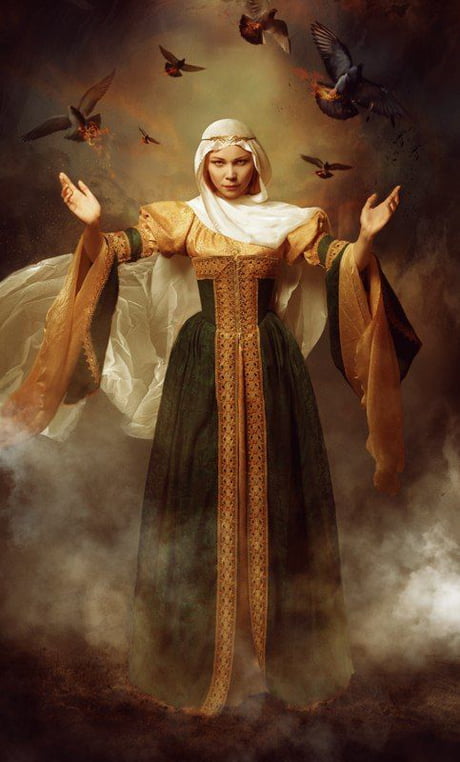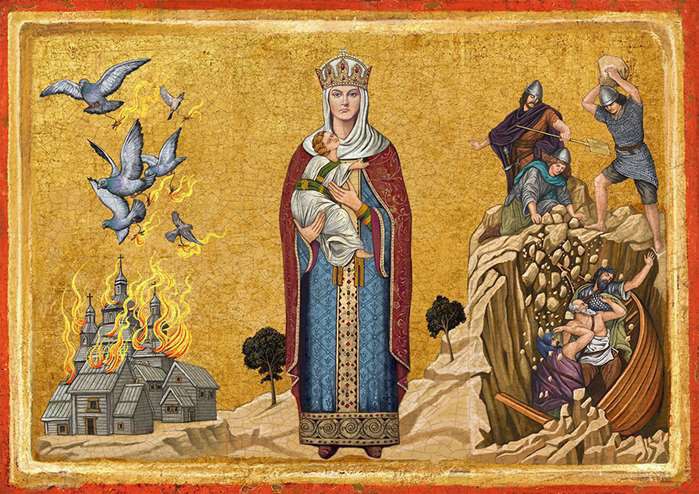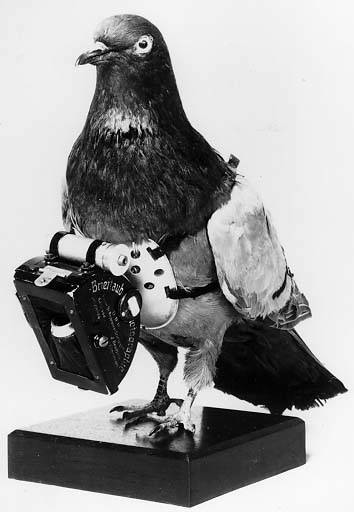
This Monday is July 11th, a date on which a number of important events have occurred. In 1804, Aaron Burr fatally shot Alexander Hamilton in a duel. 110 years later, Babe Ruth made his debut in Major League Baseball. We at Pigeons of War, however, will be commemorating the death of Saint Olga of Kyiv. A 10th-century medieval princess, Olga was an early pioneer of pigeon warfare.
Olga was born in Plesokov at some time between 890 C.E. to 925 C.E—historians aren’t exactly sure when. Of Varangian descent, at 15 years old she was married off to Igor, the Prince of Kyiv and member of the Rurikid dynasty. A relatively new realm, Kyivan Rus encompassed much of the territory that gave rise to modern-day Ukraine, Belarus, and Russia. Surrounding tribes resented the principality’s ascent in stature, looking for ways to undermine it. The Drevlians—a forest-dwelling, eastern Slavic group—had paid tribute to Igor’s father Oleg for years, but stopped upon Oleg’s death. In 945 C.E., Igor traveled to the Drevlians’ capital city and demanded payment. Their response was brutal—Igor was allegedly tied to two bent tree trunks and torn in half when the trees were released.

In the wake of her husband’s murder, Olga ruled as regent for her three-year-old son, becoming the first woman to rule over Kyivan Rus. During her reign, she waged war against the Drevlians to avenge the slaughter of Igor. Achieving great success, she turned her sights toward the city where her husband had been killed. A yearlong siege of the capital bore little fruit, so the princess plotted a bold scheme. Olga informed the inhabitants that she would end the siege for a small price:
Give me three pigeons and three sparrows from each house. I do not desire to impose a heavy tribute, like my husband, but I require only this small gift from you, for you are impoverished by the siege.
Stunned by this meager demand, the Drevlians all too happily complied. An account of what happened next paints an apocalyptic scene:
Now Olga gave to each soldier in her army a pigeon or a sparrow, and ordered them to attach by a thread to each pigeon and sparrow a piece of sulphur bound with small pieces of cloth. When night fell, Olga bade her soldiers release the pigeons and the sparrows. So the birds flew to their nests, the pigeons to the cotes, and the sparrows under the eaves. Thus the dove-cotes, the coops, the porches, and the haymows were set on fire. There was not a house that was not consumed, and it was impossible to extinguish the flames, because all the houses caught fire at once.

As the townspeople fled the inferno, Olga ordered her soldiers to capture them—some were slain on the spot, others enslaved. A few were spared, commanded to pay a heavy tribute to Kyiv. The Drevlians troubled the princess no more during the rest of her reign.
Olga reigned until her son came of age. Not much information is available about her years as regent, aside from her conversion to Christianty in the 950s. For her efforts to Christianize Kyivan Rus, Olga has been canonized in both the Russian Orthdox and Roman Catholic churches. Her feast day is July 11th, the traditional date of her death. She is considered the patron saint of widows and orphans.

Olga really should be considered the patron saint of pigeon warfare. Indeed, her use of pigeons as actual weapons presaged concepts envisioned in the Twentieth Century. In 1943, American psychologist B. F. Skinner approached military officials with a plan that would use pigeons to guide bombs. The military was skeptical, but given that there was no way to guide missiles at the time, it agreed to finance “Project Pigeon.” Granted $25,000 to investigate this concept, Skinner developed a nose cone for a missile that had three electronic screens and three spots for pigeons. The pigeons would be trained beforehand to recognize a target and to peck at it when it moved away from the center of the screen. Theoretically, when the missile was launched, the birds would see an image of the target on the electronic screen and start pecking if the image moved. Their pecking would activate cable harnesses attached to the birds’ heads, steering the missile towards its intended destination. The missiles would not have an escape hatch, so the pigeons would be sacrificed upon impact. Fortunately for the pigeons, the military canceled the project before it could be realized.

Similarly, after the Second World War, the British military considered using pigeons as biological warfare bombs. Noting that pigeons were undetectable on radar and could be trained to home to any particular object, the head of the Air Ministry Pigeon Section proposed airdropping pigeons armed with explosive bacteria capsules over enemy targets. “A thousand pigeons, each with a two ounce explosive capsule, landed at intervals on a specific target might be a seriously inconvenient surprise,” the head of the Air Ministry Pigeon Section enthused in a 1945 report. British intelligence also investigated the possibility of “training pigeons to fly into searchlights armed with an explosive charge.” Neither recommendation was pursued.
We certainly don’t endorse using pigeons as weapons. Their amazing homing abilities vastly outweigh any potential they may have as incendiary devices. It’s best to keep in mind, though, that the medieval era was harsh and unforgiving, especially for a recently widowed princess. Olga used her brains to triumph over the enemy, saving her young son and kingdom, and we think that is worthy of celebration.
Sources
- Bowcott, Owen. “RAF Planned Kamikaze Anthrax Pigeon Squadron.” The Guardian, Guardian News and Media, 21 May 2004, https://www.theguardian.com/uk/2004/may/21/artsandhumanities.military
- Cross, Samuel and Sherbowitz-Wetzor, Olgerd, The Russian Primary Chronicle, Laurentian Text, at 81 (1953).
- “Pigeon Terrorists Were to Drop Bombs.” Australian Broadcasting Corporation, 21 May 2004, https://www.abc.net.au/science/articles/2004/05/21/1113180.htm.
- Stromberg, Joseph. B.F. Skinner’s Pigeon-Guided Rocket. Smithsonian Institution, 18 Aug. 2011, https://www.smithsonianmag.com/smithsonian-institution/bf-skinners-pigeon-guided-rocket-53443995/.
